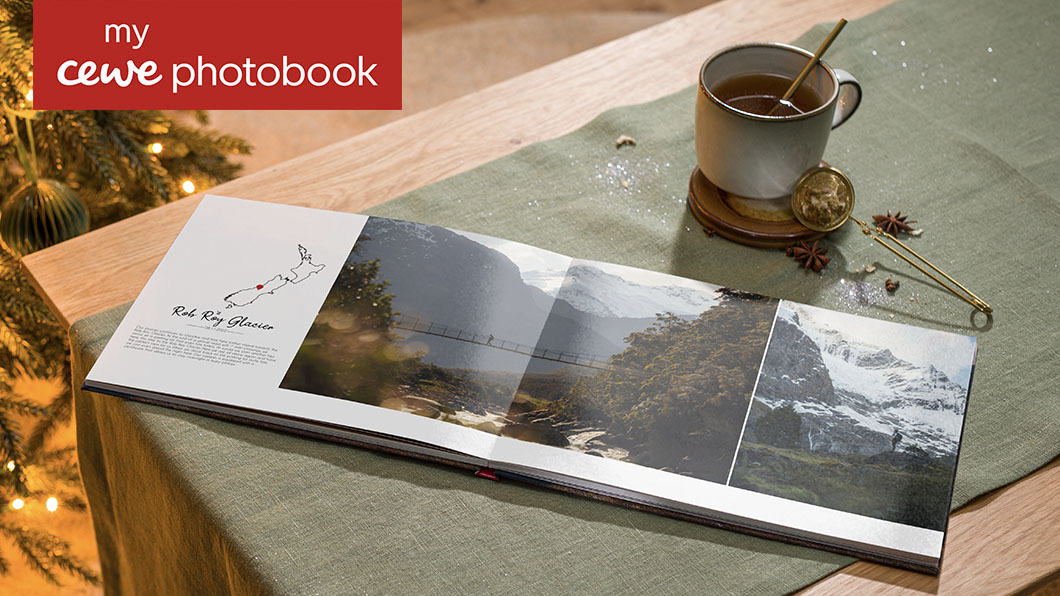Paper stock: what difference does it make to printing?

There’s so much to consider when printing your images, from the choice of file type to your camera’s colour space to the correct calibration of your screen. With everything else to think about, it can be easy to overlook the kind of paper you’re printing on – yet this is potentially the most important part of the process!
Picking the right paper is as vital to the process as using the right camera settings. Different paper stocks will affect things like the vibrancy of the colours, the depth of the blacks, as well as the texture and dimension of the subjects and scenes depicted.
Whether you’re printing out your own images on a home printer or having them professionally printed by a photo services company like CEWE, it’s essential to make an educated choice. Don’t just pick the cheapest paper on the discount shelf, and don’t just click the first option in the menu on a website!
You wouldn’t take a photograph without using the right lens, and you shouldn’t print a photograph without using the right stock. Here are the main categories to consider…
Photographic paper
A great all-purpose stock, photographic paper lends itself particularly well to full-colour imagery. Colours pop with intensity and dynamism, while detail is equally richly rendered – the shape, texture and form are accentuated, giving three-dimensionality to your images that makes them pop off the page.
This paper stock is generally thicker and more durable, in the 370gsm range, giving a robustness to your prints – especially if they are part of a photobook. Not all photographic paper is created equal, so make sure to look for brands you can trust – CEWE uses Fujifilm photo paper for its printing services, for example, so you know that you’re getting premium quality.
Within this category there are three variants, each with distinct characteristics:
• Classic
Colour intensity with a classic lustre finish
• Gloss
Vibrant colours and strong contrasts with unique depth
• Matte
Subtle colours and fine detail on a smooth, non-reflective surface

Digital printing paper
Where photographic paper is punchy and intense with bold colours, digital printing paper imbues your images with a softer and more natural look with discreet colours. Thus it’s a great option for black-and-white photography, and lends itself to genres like landscapes and portraiture.
This stock is also lighter than photographic paper, at around 200gsm, which makes it the perfect choice for products such as photo books where higher page counts are required.
Like photo paper there are three variants common to digital printing paper, though their characteristics differ slightly:
• Classic
Slightly textured and reflection-free, with a semi-matte finish for balanced contrast and natural colours
• Gloss
A high-gloss finish for vibrant colours, strong contrast and exceptional detail
• Matte
A matte finish and slight texture that’s shine-free, with soft colours and muted contrasts

Recycled paper
If you’re conscious of the environment, CEWE offers 100% recycled printing paper that’s kind to the planet without compromising your image quality. In fact it produces very similar results to classic paper, with the same 200gsm weight and a silk-matte finish.
Made from 100% waste paper, and created using environmentally-friendly digital printing with water-based ink, a soft and natural feel is achieved with deep colours and balanced contrast – all while saving energy, water and wood with low-pollutant production methods.
Since 2013 CEWE has been certified by the Forest Stewardship Council (FSC), an international nonprofit dedicated to the protection of the forests around the world, so you can rest assured that paper originates from responsibly managed forests.
There is no right or wrong choice when it comes to paper; ultimately the paper has to be appropriate for the image(s) you’re printing. Ideally you would shoot your photographs with the paper stock in mind at the point of capture, like any other creative choice (much as you would make a choice of focal, aspect ratio or colour / monochrome).
Obviously that’s not always practical but, by being aware of the properties of different paper stocks and variants, you can ensure that your images look as great on the printed page as they did on the back of your camera and on your editing screen.

Get the Digital Camera World Newsletter
The best camera deals, reviews, product advice, and unmissable photography news, direct to your inbox!
Digital Camera World is one of the leading authorities on camera and photography news, reviews, techniques, tutorials, comparisons, deals and industry analysis. The site doesn't just specialize in cameras, but all aspects of photography, videography and imaging – including camera phones, gimbals, lenses, lighting, editing software, filters, tripods, laptops, printers, photo books, desks, binoculars and more.
Whether you're using, looking to buy or trying to get the most out of a compact camera, action camera, camera drone, cinema camera, beginner camera or professional camera, Digital Camera World has a roster of experts with combined experience of over 100 years when it comes to cameras, photography and imaging.

